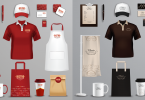Yes is the short answer, they do. Totes, as the kids say.
We’ve got five reasons why beacons in restaurants make sense.
UPDATE: We’ve published a follow-up to this post with three great scenarios where your restaurant app, combined with a beacon, makes awesome sense.
Skip ahead to read our five reasons, or enjoy a little background first.
It all started with check-ins.
Location-based marketing started with Foursquare. It quickly spread with Gowalla, Facebook Places, Google Places, Yelp check-ins, and every branded mobile app.
Check-ins, and the possible rewards that stem from them, were what we all thought of when we said location-based marketing. It was actual a cool idea — the notion that you could know who’s in your restaurant — and how often they visit, how widely they’re sharing their visits — and reward them accordingly.
Even typing that last sentence reminds me of the early promise of location-based marketing.
But it never took off, really, despite the promise.
It’s 2014. Things are evolving.
We’re now hearing about beacons. And I’m talking about beacons in restaurants. Do you think they make sense?
I’ve got an article from the UK that I want you to read (but don’t go there just yet). Finish ours, then go read it:
Here’s the deal:
Beacons are coming, like it or not.
We’re super-close to seeing widespread use of beacon technology. Beacons will allow companies to have the same, extensive visit data we’ve all had with our websites for some time now — and I’m not just talking about big brands. I’m talking about mom-and-pops just as much.
For example, through my free deployment of Google Analytics, I can know how many people are at NextRestaurants in real-time, and have been within the last hour, day, week, month, and over custom date ranges. I know where they went on the website (obviously not by name), and in what order pages were viewed.
I know where they entered the website (on what page they landed on, and where they came from), and I know where they exited.
I even have an overview of demographics: age (41% are between 35 and 44), gender (70.7% are male), and interests (7.4% would categorize themselves as “Technophiles,” while 4.2% would categorize themselves as “Foodies.”).
We shouldn’t be surprised that someone wants to bring that to the physical world.
Beacons make so much sense to retailers, but they make great sense for the restaurant industry too. So, including those visit insights, here are five ways they could be used:
1. To deliver custom menus to VIP customers.
Someone — Yelp? OpenTable? A new startup? — is going to build it into their app to allow beacon-delivered custom menus to guests based on criteria such as visit history and past purchases. You could conceivably deliver a custom, maybe even secret, menu to your best guests based on these types of criteria.
If you’re so inclined, you could partner with a beacon technology provider to build such functionality into your own app.
2. To deliver custom pricing to different customers.
Why not go one step further? If you’re going to deliver a custom menu, might as well deliver custom pricing, giving special rewards to your very best, elite guests. Or, if you’re feeling generous, you could deliver incentive pricing to someone who’s never been to your restaurant.
3. To give you even better insight into your restaurant traffic.
Listen, if you believe in installing analytics software on your website as mentioned above, it doesn’t make sense that you’d be opposed to installing analytics hardware and software into your location to see and compare traffic over time.
The way most beacon technology works is through anonymous data sent by your phone — the beacon device receives that data and then can, if you choose, send customized messaging back. Cut out that second part and at the very least you have deep insight into your real traffic.
Your tickets CAN tell you how many guests you served. Your beacon-delivered analytics could tell you how many actual people visited your restaurant. Mind that gap and maybe you’ve mined more revenue for your restaurant.
4. To let consumers know how busy you are, before they arrive.
The article I mentioned above introduces a company named Presence Orb, who aims to deliver exactly that information to consumers — they’d use a separate app to gauge how loaded the bus is that they want to take, or how busy your restaurant is.
Some companies will rely on beacons to pull this sort of data, such as US-based Swirl and Ireland-based startup Pulsate. Presence Orb uses Wi-Fi.
5. To allow guests to make mobile payments.
Dash, only available in NYC today, makes mobile payment via beacon available today. As a consumer, you’d link a bank account to the app. Then, “once a consumer is at a participating bar or restaurant…they can then see their tab in real-time, add tips and checkout by themselves when they leave the restaurant.”
Paypal has also announced their own Beacon product that will enable even independent restaurants to handle transactions with Paypal-using consumers.
So, what can you do TODAY?
Unless you’re a big brand or can partner with Dash in New York City, there’s not a ton you can do with this technology today, as much of it relies on you building your own mobile app. (At least until Paypal launches its platform.)
It is absolutely coming. And you can bet that the aggregated apps that serve as directories and help your restaurant get found — like Yelp, OpenTable, and newcomers who don’t yet exist, will surely build these capabilities soon.
What do you think? Creepy? Awesome? Scared to death? Can’t wait?
If you replied “Awesome” you’ll be happy to know we’ve got an article coming next week on food deliveries via drones.
I’m kidding. For now.
Photo courtesy of Estimote.




